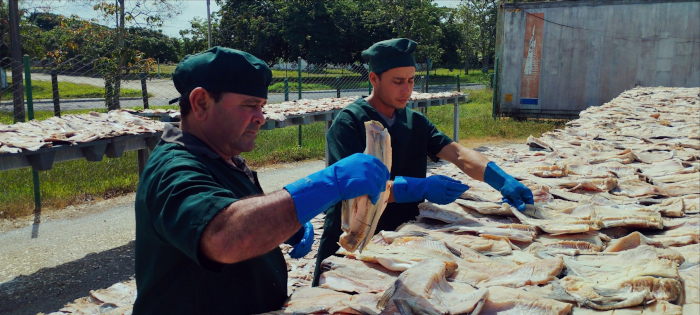SIBANICÚ, CAMAGÜEY — Brining, an age-old method for preserving meat and fish, is proving effective once again for the province’s aquaculture enterprises amid severe energy shortages.
The Basic Business Unit (UEB) Acuinicú, located in this municipality, has successfully employed this technique for several months to preserve a significant portion of the catch arriving for industrial processing.
Adrián Velazco, a brigade chief at the institution, stated that there is a strong commitment among the team to work tirelessly and prevent any production losses due to power outages.
“We’re receiving between 2.5 and 3 tons of biomass daily,” he said. “Given the volume, part of it is sold to prioritized institutions, and the rest goes to the public through our seven fish markets located in the municipalities of Guáimaro and Najasa.”
According to the specialist, the preservation process involves submerging the fish in a saline solution for three days, after which it is placed on racks in the sun for another three days to dry properly.
Armando Peña Guerra, director of Acuinicú—an entity affiliated with the PescaCam Fishing Company—explained that the main species being processed are tench and carp, and the goal is to meet the annual production target of 1,355 tons.
Currently, he noted, efforts are underway to repair the compressor at the facility’s ice plant—an essential task to ensure the daily catch can be properly cooled, a process currently hindered by insufficient ice production.
Translated by Linet Acuña Quilez



